Archaeology & Ancient History / Archaeological Method & Theory
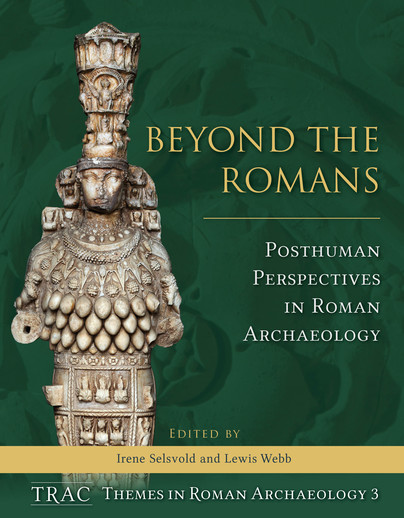
Format: Hardback
Pages: 176
ISBN: 9781789251364
Pub Date: 31 Mar 2020
Series: TRAC Themes in Archaeology
Illustrations: b/w
Description:
This third volume in the TRAC Themes in Roman Archaeology series offers a new encounter between posthumanism and Roman archaeology. Posthuman theoretical perspectives have had substantial impacts in various fields, including archaeology, critical studies, and feminist studies, but only recently have emerged in the study of the ancient world. Posthumanism is an umbrella term for a multiplicity of theoretical perspectives that critique humanism, de-centre the human subject, reconsider the boundaries and relations among humans and the natural world, and frame the human condition as non-fixed and variable.
Such perspectives also consider the agency of non-humans, their entanglements, interactions, and relations with humans, as well as the ethical implications thereof. The Romans were entangled with other beings and the world around them: they were relational beings, as we are today. With this volume, the editors aim to explore the potential and utility of posthuman theoretical perspectives for Roman archaeology. The contributors to this volume consider a diverse array of themes including posthuman performances of emperors, the agency and relationality of epigraphic funerary markers, the ritual function and agency of votive figurines, the materiality of divine agency in the city of Rome, hybrid chicken-human coins, plant agency, the agency and nature of water in Roman urban infrastructure, and the Anthropocene. Collectively, the contributions demonstrate the numerous possibilities posthumanism offers Roman archaeology and reveal the posthuman nature of the Roman world. Ultimately, the volume stresses that humans and non-humans are entangled and imbricated in larger systems: we are all posthuman.
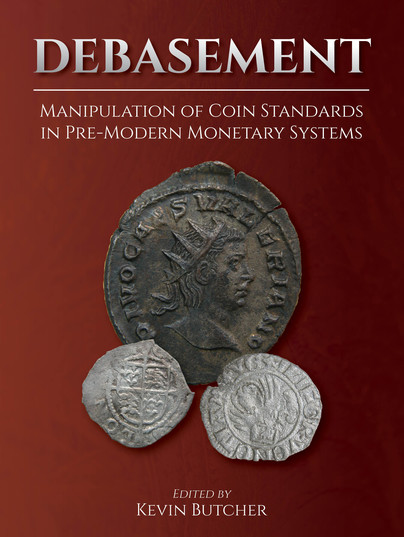
Format: Hardback
Pages: 240
ISBN: 9781789253986
Pub Date: 25 Feb 2020
Illustrations: b/w and colour
Description:
The debasement of coinage, particularly of silver, was a common feature of pre-modern monetary systems. Most coinages were issued by state authorities and the condition of a coinage is often seen (rightly or wrongly) as an indicator of the broader fiscal health of the state that produced it. While in some cases the motives behind the debasements or reductions in standards are clear, in many cases the intentions of the issuing authorities are uncertain.
Various explanations have been advanced: fiscal motives (such as a desire to profit or a to cover a deficit caused by the failure to balance expenditure and revenues); monetary motives (such as changing demand for coined money or a desire to maintain monetary stability in the face of changing values of raw materials or labour costs); pressure from groups within society that would profit from debasement; misconduct at the mint; or the decline of existing monetary standards due to circulation and wear of the coinage in circulation. Certain explanations have tended to gain favour with monetary historians of specific periods, partly reflecting the compartmentalization of scholarship. Thus the study of Roman debasements emphasizes fiscal deficits, whereas medievalists are often more prepared to consider monetary factors as contributing to debasements. To some extent these different approaches are a reflection of discrepancies in the amount of documentary evidence available for the respective periods, but the divide also underlines fundamentally different approaches to the function of coinage: Romanists have preferred to see coins as a medium for state payments; whereas medievalists have often emphasized exchange as an important function of currency. The volume is inter-disciplinary in scope. Apart from bringing together monetary historians of different periods, it also contains contributions from archaeometallurgists who have experience with the chemical and physical composition of coins and technical aspects of production of base alloys.
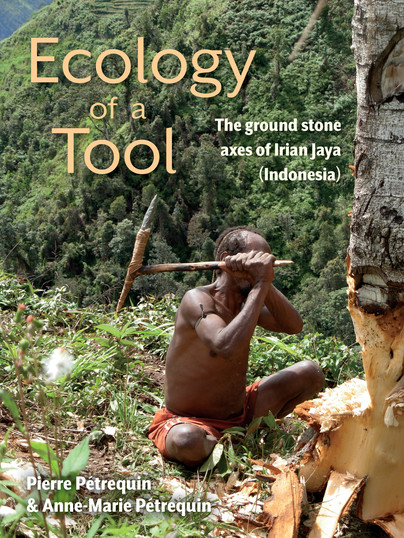
Format: Hardback
Pages: 336
ISBN: 9781789253863
Pub Date: 25 Feb 2020
Series: Archéo Logiques
Illustrations: b/w and colour
Description:
New Guinea, and especially Papua New Guinea, is the last country in the world where ethnologists were able to closely observe, film and photograph the whole manufacturing chaînes opératoires of polished stone felling tools, from quarry extraction to finished tool use. Research on the polished blades of PNG has evolved over the years, following changing philosophies and research agendas. While it is clear that an exceptional sum of information has been gathered, it remains centered on that small part of the Highlands where conditions for field research were more pleasant than elsewhere.
Our presentation of Irian Jaya axes therefore tackles a topic that remains mostly unexplored. Until now, stone tool research in New Guinea has followed an anthropocentric approach, in which tools are seen more as vectors for social exchanges than as means of acting on the environment. This monograph will take a different approach. Here, polished stone blades are placed at the center of the world, between, on one side, the transformed natural environment, and, on the other, the social and economic environment. This approach will allow us to suggest new avenues of inference in archaeology, as well as to test and abandon existing ones.In this volume, the stone blade is considered as a living being, existing in balance within its biotope. This idea is not far removed from the beliefs of Irian Jaya farmers, for whom life animates certain objects of their material culture. Following a brief presentation of Irian Jaya, we will describe the function of polished stone blades in Irian Jaya societies and the distribution of hafting styles, define and study the quarrying zones and the areas of diffusion and use of their production, and, if possible, the different trends noted in each area of polished blade production and exchanges. Finally, we will conclude with a discussion of the ethnoarchaeological potential of these contemporary observations.
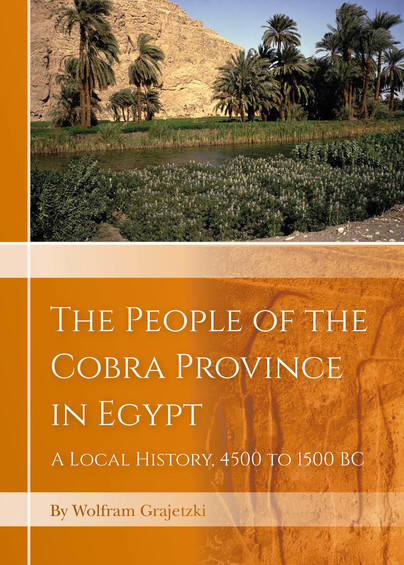
Format: Hardback
Pages: 288
ISBN: 9781789254211
Pub Date: 25 Feb 2020
Illustrations: 100 b/w
Description:
The book delivers a history from below for the first half of Egyptian history covering the earliest settlements, state formation and the pyramid age. The focus is on the Wadjet province, about 350 km south of modern Cairo in Upper Egypt. Here archaeological records provide an especially rich dataset for the material culture of farmers.
Histories of Ancient Egypt have focussed heavily on the kings, monuments and inscriptions, while the working population is hardly mentioned. The book investigates the life of people far from the centres of power. One main aim of the book is the interaction between farmers and the ruling classes at the centres of power and locally. How did decisions at the royal centre affect the life of ordinary people? The Introduction offers a critical survey of Egyptologists and their attitudes towards the working class. The social and cultural background of these researchers is analysed to assess how heavily they are influenced by time and their political and cultural background. The First chapter then describes the location and gives a history of previous research and excavations. The archaeological sites and the recorded ancient place names of the province are presented to provide a geographical framework for the book. The following chapters are arranged in chronological order, mainly according to the archaeological phases visible in the province. It appears that in phases of a weak central government, people in the provinces were much better off, while in phases of a strong central government burials of poorer people are almost absent. The reasons for this are discussed. A substantial part of the book comprises descriptions of single burials and the material culture in the province. The archaeology of the poorer people is the main focus. Burial customs and questions of production are discussed. For a fuller picture, evidence from other parts of Egypt is also taken into account. Thus settlement sites in other regions are presented to provide contemporary evidence for living conditions in particular periods. As the book will focus on the lower classes, the Tributary Mode of Production will be used as the main theoretical framework. The Tributary Mode of Production (previously known as the Asiatic Mode of Production) is a term that goes back to Karl Marx, but was mainly used in the 20th century to describe ancient societies whose economies were not based on slaves. A constant question will be the status of the working population. Were they slaves, serfs or free citizens? It will be argued that they were most often in a dependent position comparable to that of serfs, while there is little evidence for slavery. The numerous burials presented in the volume are important for highlighting the diversity of burials in the different periods. Many will be placed in special subchapters. Readers can skip these chapters when they prefer to concentrate on the main text.
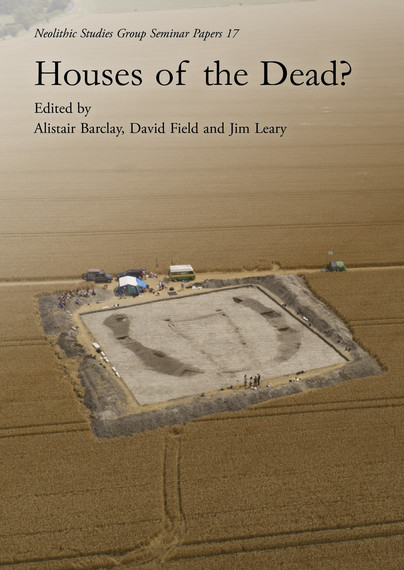
Format: Paperback
Pages: 216
ISBN: 9781789254105
Pub Date: 15 Feb 2020
Series: Neolithic Studies Group Seminar Papers
Description:
The chronological disjuncture, LBK longhouses have widely been considered to provide ancestral influence for both rectangular and trapezoidal long barrows and cairns, but with the discovery and excavation of more houses in recent times is it possible to observe evidence of more contemporary inspiration. What do the features found beneath long mounds tell us about this and to what extent do they represent domestic structures. Indeed, how can we distinguish between domestic houses or halls and those that may have been constructed for ritual purposes or ended up beneath mounds?
Do so called 'mortuary enclosures' reflect ritual or domestic architecture and did side ditches always provide material for a mound or for building construction? This collection of papers seeks to explore the interface between structures often considered to be those of the living with those for the dead.
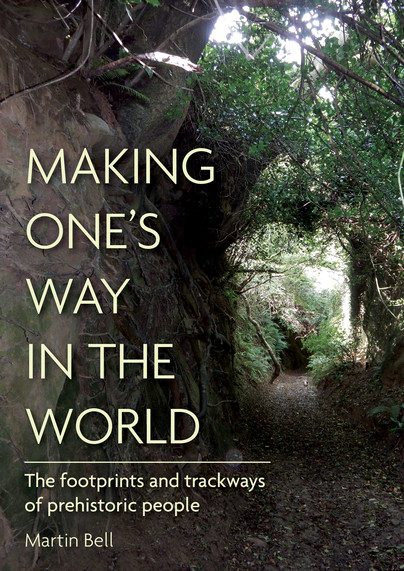
Format: Hardback
Pages: 320
ISBN: 9781789254020
Pub Date: 31 Jan 2020
Description:
The book draws on the evidence of landscape archaeology, palaeoenvironmental studies, ethnohistory and animal tracking to address the neglected topic of how we identify and interpret past patterns of movement in the landscape. It challenges the pessimism of previous generations which regarded prehistoric routes such as hollow ways as generally undatable. The premise is that archaeologists tend to focus on ‘sites’ while neglecting the patterns of habitual movement that made them part of living landscapes.
Evidence of past movement is considered in a multi-scalar way from the individual footprint to the long distance path including the traces created in vegetation by animal and human movement. It is argued that routes may be perpetuated over long timescales creating landscape structures which influence the activities of subsequent generations. In other instances radical changes of axes of communication and landscape structures provide evidence of upheaval and social change. Palaeoenvironmental and ethnohistorical evidence from the American North West coast sets the scene with evidence for the effects of burning, animal movement, faeces deposition and transplantation which can create readable routes along which are favoured resources. Evidence from European hunter-gatherer sites hints at similar practices of niche construction on a range of spatial scales. On a local scale, footprints help to establish axes of movement, the locations of lost settlements and activity areas. Wood trackways likewise provide evidence of favoured patterns of movement and past settlement location. Among early farming communities alignments of burial mounds, enclosure entrances and other monuments indicate axes of communication. From the middle Bronze Age in Europe there is more clearly defined evidence of trackways flanked by ditches and fields. Landscape scale survey and excavation enables the dating of trackways using spatial relationships with dated features and many examples indicate long-term continuity of routeways. Where fields flank routeways a range of methods, including scientific approaches, provide dates. Prehistorians have often assumed that Ridgeways provided the main axes of early movement but there is little evidence for their early origins and rather better evidence for early routes crossing topography and providing connections between different environmental zones. The book concludes with a case study of the Weald of South East England which demonstrates that some axes of cross topographic movement used as droveways, and generally considered as early medieval, can be shown to be of prehistoric origin. One reason that dryland routes have proved difficult to recognise is that insufficient attention has been paid to the parts played by riverine and maritime longer distance communication. It is argued that understanding the origins of the paths we use today contributes to appreciation of the distinctive qualities of landscapes. Appreciation will help to bring about effective strategies for conservation of mutual benefit to people and wildlife by maintaining and enhancing corridors of connectivity between different landscape zones including fragmented nature reserves and valued places. In these ways an understanding of past routeways can contribute to sustainable landscapes, communities and quality of life.
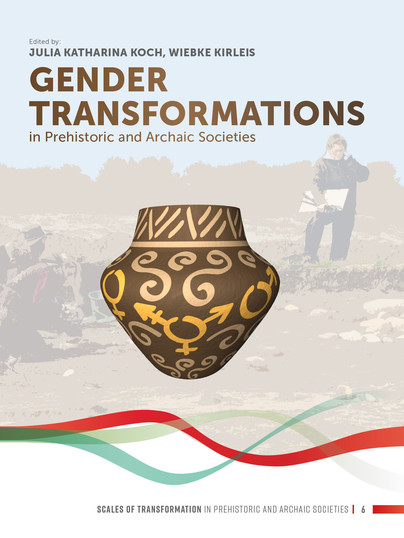
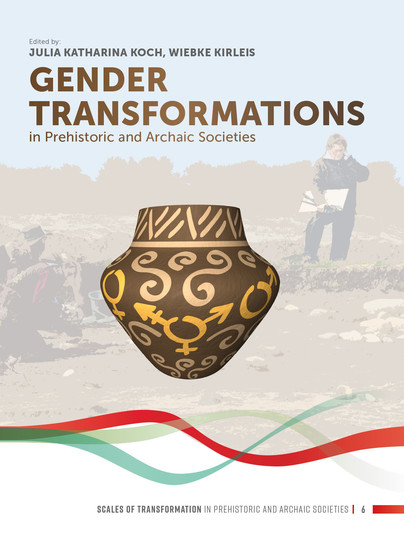
Pages: 500
ISBN: 9789088908224
Pub Date: 17 Dec 2019
Series: Scales of Transformation
Pages: 500
ISBN: 9789088908217
Pub Date: 17 Dec 2019
Series: Scales of Transformation
Description:
In which chronological, spatial, and social contexts is gender a relevant social category that is noticeable in the archaeological material? How can transformations in social gender relations and identity be recognized archaeologically? Is the identity of prehistoric people defined by gender?
If so, what is the accompanying cultural context? What about gender equality among the scientists working in archaeology? In what degree are research teams, as well as their scientific approaches, biased today? These and other burning questions are intensively discussed in this volume, which comprises 25 contributions presented at the international workshop ‘Gender Transformations in Prehistoric and Archaic Societies’, organised by the Collaborative Research Centre 1266 of Kiel University funded by the German Research Foundation (DFG). The workshop offered a platform to discuss a broad range of approaches on the inter-dependencies between gender relations and socio-environmental transformation processes. Beyond a focus on the archaeology of women, gender archaeology offers a variety of possibilities to reconstruct the contribution of social groups differentiated e.g. by age, gender, and activities related to cultural transformation, based on the archaeological material. Thus, this volume includes papers dealing with different socio-economic units, from south-western Europe to Central Asia, between 15,000 and 1 BCE, paying particular attention to the scale of social reach. Since gender archaeology, and in particular feminist archaeology, also addresses the issue of scientific objectivity or bias, parts of this volume are dedicated to equal opportunity matters in archaeological academia across the globe. This is realised by bringing together feminist and female experiences from a range of countries, each with its own specific individual, cultural, and social perspectives and traditions. The papers are organised along three central topics: ‘Gendering fieldwork’, ‘Tracing gender transformations’, and ‘Gendering and shaping the environment’. By gendering the archaeological discussion on transformation processes, the contributions aim to more firmly embed gender-sensitive research in the archaeological agenda, not just in Europe, but world-wide.
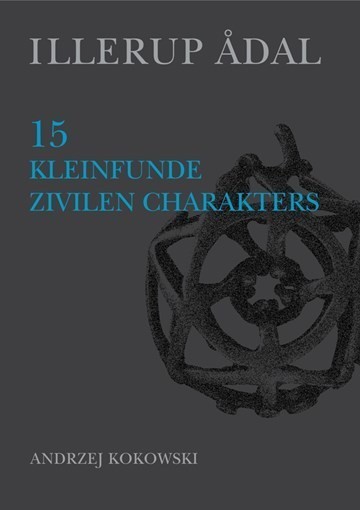
Format: Hardback
Pages: 235
ISBN: 9788793423398
Pub Date: 01 Dec 2019
Illustrations: Illustrations, black and white
Description:
Illerup vol. 15 is the last volume in the many publications about the sacrificial weapons find by Danish Illerup Ådal from the late Iron Age. This volume is about the many non-military finds, such as dice for board games, beads, jewellery, amulets, etc.
– things that the soldiers have worn as jewellery around their necks, or in purses on their belts. These items therefore give a unique insight into the soldiers’ everyday lives, their appearance and identity.
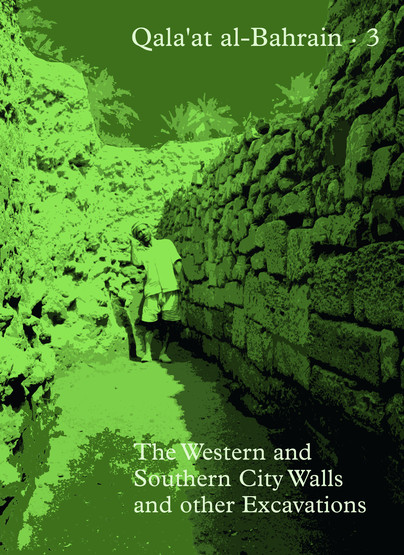
Format: Hardback
Pages: 213
ISBN: 9788793423282
Pub Date: 01 Dec 2019
Description:
The capital of ancient Dilmun, Qala’at al-Bahrain, the most important archaeological site in East Arabia, was excavated in 1954-1978 by a Danish expedition from Moesgaard Museum. The first two volumes were published in 1994 and 1997, dealing with the northern city wall, the Islamic fortress and the central monumental buildings. The third volume covers the remaining 13 excavations, presenting their architectures and stratigraphies.
A detailed treatment of the finds is given, stamp seals, inscriptions, figurines, incense burners, human bones, pottery, etc., dating from the late 3rd millennium to the Islamic period.
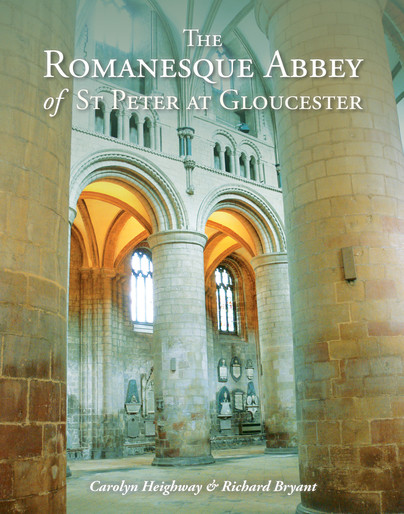
Format: Paperback
Pages: 128
ISBN: 9781789254143
Pub Date: 15 Nov 2019
Illustrations: Colour illustratons
Description:
This book was inspired by the records made by Carolyn Heighway during the thirty years when she was archaeological consultant at Gloucester Cathedral. The survival of so much of the abbey of 1089 is remarkable, and often not appreciated by the casual visitor since it is ingeniously overlaid by Gothic alterations. Since 2000, surveys have been produced which enable accurate plans and elevations to be made which clarify the late 11th and early 12th century appearance of the building; deductions have also been made from archaeological observations.
Since there are almost no documents for the abbey before the 15th century which relate to construction matters, the building itself is primary evidence, and archaeology is an important element. The book is lavishly illustrated with photographs, plans and measured drawings including accurate reconstructions; comparative scale plans of Worcester and Tewkesbury are also included. The late 11th-12th century church is described in detail, along with the surviving claustral buildings. There is a chapter on polychromy and on the surviving 11th-12th century sculpture, and a full bibliography. The whole is set in context by Malcolm Thurlby, who comments on the wider sources and associations.
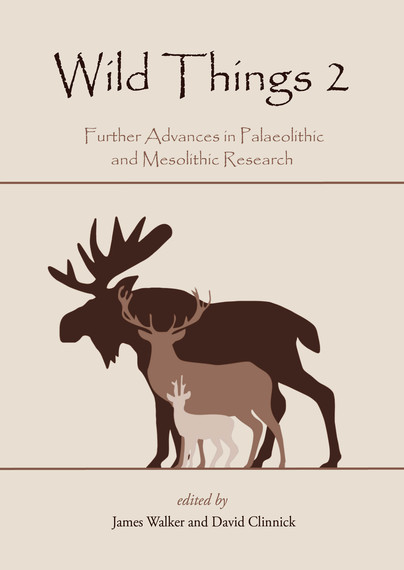
Format: Paperback
Pages: 208
ISBN: 9781785709463
Pub Date: 31 Oct 2019
Description:
Building on the first Wild Things volume (Oxbow Books 2014) which aimed to showcase the research putting archaeologists researching the Palaeolithic and Mesolithic at the cutting edge of understanding humanity’s past, this collection of contributions presents recent research from an international group of both early career and established scientists.Covering aspects of both Palaeolithic and Mesolithic research in order to encourage dialogue between practitioners of archaeology of both periods, contributions are also geographically diverse, touching on British, European, North American and Asian archaeology. Topics covered include transitional periods, deer and people, stone tool technologies, pottery, land-use, antler frontlets, and the development of prehistoric archaeology an 'age of wonder'.
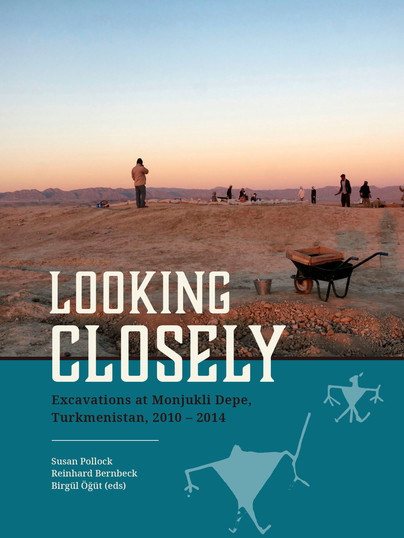
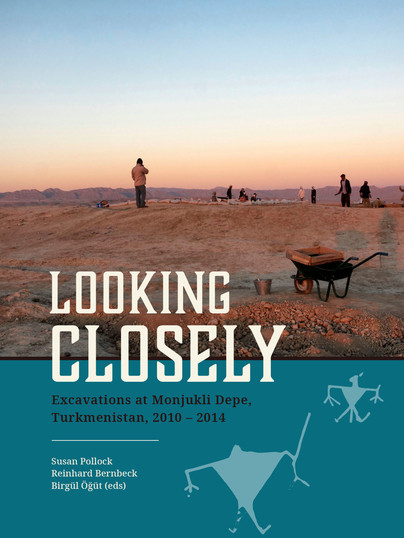
Pages: 500
ISBN: 9789088907678
Pub Date: 10 Oct 2019
Illustrations: 195fc/117bw
Pages: 500
ISBN: 9789088907654
Pub Date: 10 Oct 2019
Illustrations: 195fc/117bw
Description:
Soviet archaeological research in southern Turkmenistan revealed a series of small Late Neolithic and Aeneolithic villages strung along the streams that emerge from the Kopet Dag and water the narrow foothill zone separating the mountains from the Kara Kum desert. A commonly accepted premise of their work was that these communities garnered their technological knowledge if not their populations from regions to the south and west in present-day Iran.Since 2010 we have reinvestigated one of these sites, the small Late Neolithic (ca.
6200-5600 BCE) and early Aeneolithic (ca. 4800-4350 BCE) village of Monjukli Depe. Our research examines microhistories of cultural techniques as a source of insights into long-term and spatially extensive change as well as internal variations and similarities in material practices. This volume presents results of this work. A Bayesian modeling of 14C dates demonstrates a long hiatus between the Neolithic and Aeneolithic strata of the site as well as a hitherto unattested very early Aeneolithic phase (“Meana Horizon”). A sequence of densely built, well preserved Aeneolithic houses exhibits marked similarities to earlier Neolithic architecture in the region. Despite overall standardized plans, the houses reveal significant variations in internal features and practices. Similar flexibility within a set of common dispositions is evident in burial practices. Very limited quantities of pottery offer a stark contrast to the frequent occurrence of spindle whorls, indicating a substantial production of thread, and to a large and varied assemblage of clay tokens. A wide variety of fire installations attests to routinized handling of fire, which did not prevent at least one building from succumbing to a conflagration. Animal herding was heavily based on sheep and goats, while cattle figured prominently in feasts. The Meana tradition at Monjukli Depe exhibits significant structural similarities to other early village societies in Western Asia and will make this volume of interest to scholars working on similar times and contexts.
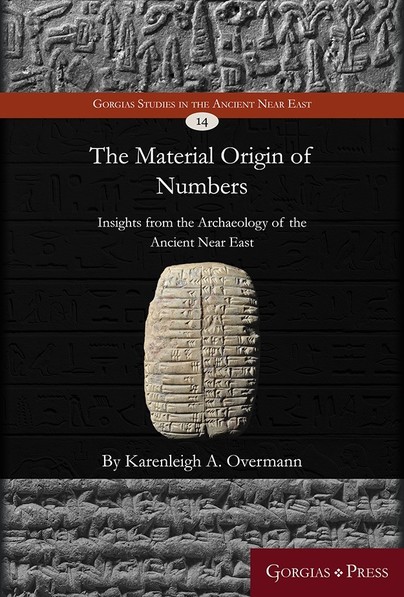
Format: Hardback
Pages: 310
ISBN: 9781463207434
Pub Date: 25 Sep 2019
Description:
The Material Origin of Numbers examines how number concepts are realized, represented, manipulated, and elaborated. Utilizing the cognitive archaeological framework of Material Engagement Theory and culling data from disciplines including neuroscience, ethnography, linguistics, and archaeology, Overmann offers a methodologically rich study of numbers and number concepts in the ancient Near East from the late Upper Paleolithic Period through the Bronze Age.
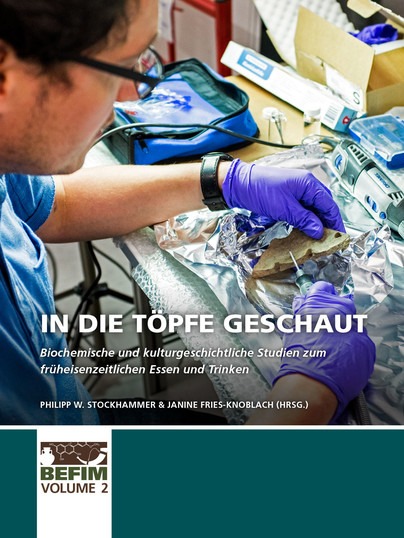
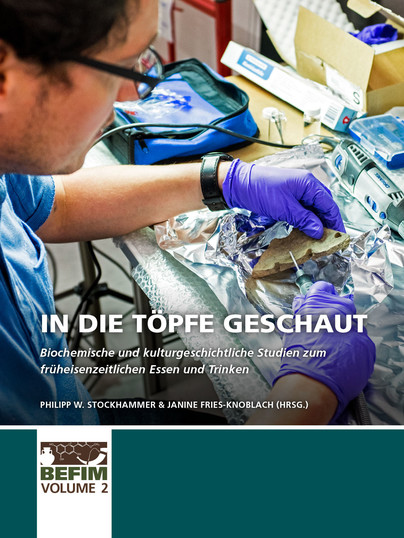
Pages: 330
ISBN: 9789088907708
Pub Date: 24 Sep 2019
Series: BEFIM
Illustrations: 100fc/10bw
Pages: 330
ISBN: 9789088907685
Pub Date: 24 Sep 2019
Series: BEFIM
Illustrations: 100fc/10bw
Description:
Abstract German: Band 2 der BEFIM-Reihe enthält sieben Beiträge des BEFIM-Teams und enger Kooperationspartner. Die Zwischenberichte aus Band 1 werden darin vertieft, abgeschlossen und in Gesamtinterpretationen eingebettet. Ein einleitender Artikel befasst sich einführungs- und überblicksartig mit der Aussagekraft von Biomarkern und Isotopenanalysen bei der Untersuchung alter organischer Reste.
Den Kern bilden drei Aufsätze, die den eigentlichen archäologisch-naturwissenschaftlichen Ergebnissen von BEFIM gewidmet sind. Der erste Beitrag bettet die Nahrungsrückstandsanalysen an Keramik aus den Altgrabungen (1950-85) sowie aus den jüngeren Ausgrabungen in der Vorburgsiedlung (2004-08) bzw. auf dem Plateau der Heuneburg (2015) in ihren archäologischen Kontext ein. Die Keramik aus relevanten Befundzusammenhängen erlaubt hierbei eine räumlich und zeitlich differenzierte Betrachtung bezüglich Ess- und Trinkgewohnheiten und Gefäßnutzung. Im zweiten Teil werden die Analyseergebnisse für lokale und importierte Keramik aus den alten, jüngeren und laufenden Grabungen auf dem und um den Mont Lassois mit Befundkontexten und formenkundlichen Aspekten verbunden. Auf diese Weise gelingt ein Vergleich des Gebrauchs unterschiedlicher Gefäßformen und gattungen in den verschiedenen Siedlungsbereichen. Als drittes werden die Ergebnisse der Nahrungsrückstandsanalysen zum Breisacher Münsterberg in ihrem archäologischen Zusammenhang präsentiert. Darauf folgt ein Aufsatz zur musealen Umsetzung der BEFIM-Ergebnisse im Landesmuseum Württemberg in Stuttgart. Den Abschluss bilden zwei geschlechtergeschichtliche Beiträge zur Frage von Alkohol in der Lebenswelt von Frauen in alten Kulturen Europas und des Nahen Ostens unter den Aspekten von Herstellung, Ausschank, Handel, Kulthandlungen und Konsum sowie zu Geschlechterklischees bei der Interpretation eisenzeitlicher Prunkgräber. Der Band richtet sich mit seinen teils generellen, teils speziellen Aufsätzen an ein breites akademisches Publikum von Universitäten, Museen und Denkmalpflege sowie an Studierende und interessierte Laien.Abstract English:Volume 2 of the BEFIM series contains seven papers by the BEFIM team and close co-operation partners. The interim reports of BEFIM 1 are enhanced, finalised, and integrated into overall interpretations. An introductory paper provides insights into and an overview of the potential of biomarker and isotopic analysis in studying ancient organic residues. The core of the book consist of three articles on the final archaeo-scientific results of BEFIM. The first one integrates the organic residue analyses (ORA) of pottery from the old excavations (1950-85) and recent excavations at both the Vorburg settlement (2004-08) and on the plateau (2015) of the Heuneburg into their archaeological contexts. The pottery from relevant find contexts allows for a spatially and temporally differentiated view of eating and drinking habits and vessel usage. The second paper combines the ORA results of local and imported pottery from early, younger, and current excavations on and around the Mont Lassios with excavation contexts and aspects of vessel shapes. By doing so, it becomes possible to compare the use of different vessel shapes and wares in each of the settlement zones. The third text presents the results of food residue analyses from Breisach-Münsterberg in their archaeological context. This is followed by an article on the museological implementation of BEFIM’s results in the Landesmuseum Württemberg in Stuttgart. The volume ends with two gender-historical contributions, one on the question of alcohol in the female sphere of life in ancient cultures of Europe and the Near East with regard to production, distribution, trade, ritual, and consumption, the other on gender stereotypes in the interpretation of ostentatious Iron Age graves. The volume with its partly general, partly specific papers aims at both a wide academic audience (universities, museums, heritage authorities) and at students and interested non-professionals.
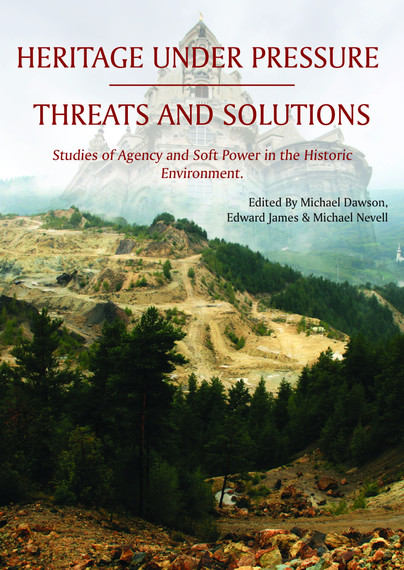
Format: Paperback
Pages: 336
ISBN: 9781789252460
Pub Date: 15 Aug 2019
Illustrations: 124 images
Description:
Heritage under Pressure examines the relationship between the political perspective of the UK government on 'soft power' and the globalising effect of projects carried out by archaeologists and heritage professionals working in the historic environment. It exemplifies the nature of professional engagement and the role of the profession in working towards a theory of practice based on the integrity of data, the recovery and communication of information, and the application of data in real world situations. Individual papers raise complex and challenging issues, such as commemoration, identity, and political intervention.
A further aim of the volume is to illustrate the role of professionals adhering to standards forged in the UK, in the context of world heritage under pressure. Papers also contribute to the emerging agenda developing as a result of the re-orientation of the UK following the Brexit vote, at once emphasising the global aspiration of the Uk’s professional archaeological body – the Chartered Institute for Archaeologists – in relation to the global reach of UK academic practice. By implication the volume also addresses the relationship between professional practice and academic endeavour. The volume as a whole contributes to the emerging debate on the authorised heritage discourse and provides an agenda for the future of the profession.
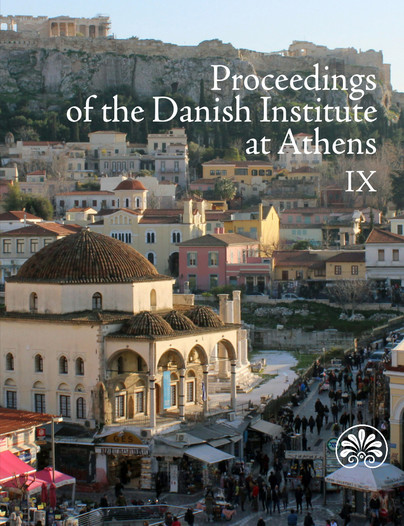
Format: Paperback
Pages: 205
ISBN: 9788771848182
Pub Date: 01 Aug 2019
Series: Proceedings of the Danish Institute at Athens
Description:
Proceedings of the well-esteemed Danish Institute in Athens conducting several archaeological excavations in Greece. This is the ninth volume of the journal. It includes articles on archaeology, art history, ancient and modern Greek history, philology and literature.



















